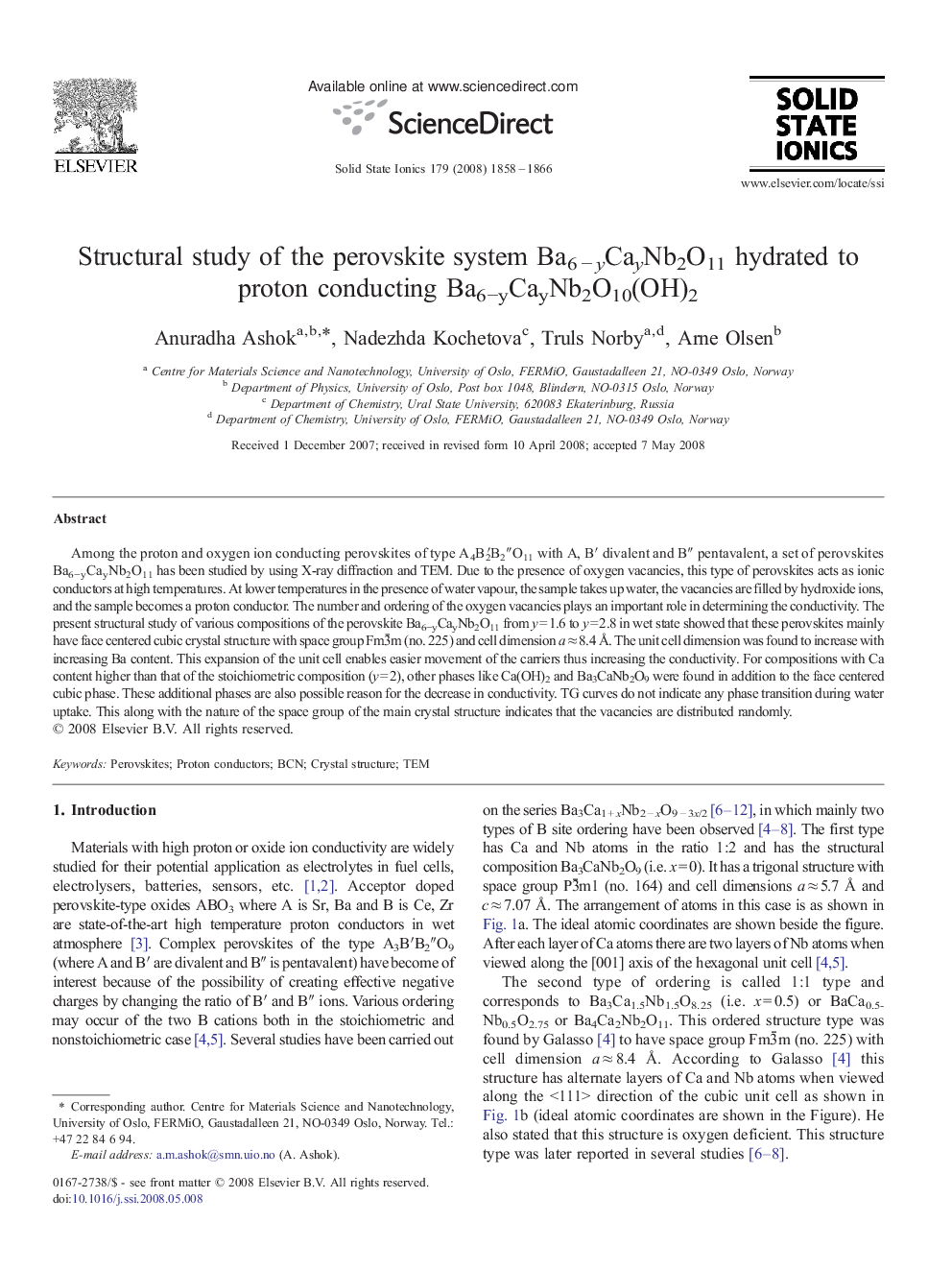| Article ID | Journal | Published Year | Pages | File Type |
|---|---|---|---|---|
| 1298001 | Solid State Ionics | 2008 | 9 Pages |
Among the proton and oxygen ion conducting perovskites of type A4B2′B2″O11 with A, B′ divalent and B″ pentavalent, a set of perovskites Ba6−yCayNb2O11 has been studied by using X-ray diffraction and TEM. Due to the presence of oxygen vacancies, this type of perovskites acts as ionic conductors at high temperatures. At lower temperatures in the presence of water vapour, the sample takes up water, the vacancies are filled by hydroxide ions, and the sample becomes a proton conductor. The number and ordering of the oxygen vacancies plays an important role in determining the conductivity. The present structural study of various compositions of the perovskite Ba6−yCayNb2O11 from y = 1.6 to y = 2.8 in wet state showed that these perovskites mainly have face centered cubic crystal structure with space group Fm3̄m (no. 225) and cell dimension a ≈ 8.4 Å. The unit cell dimension was found to increase with increasing Ba content. This expansion of the unit cell enables easier movement of the carriers thus increasing the conductivity. For compositions with Ca content higher than that of the stoichiometric composition (y = 2), other phases like Ca(OH)2 and Ba3CaNb2O9 were found in addition to the face centered cubic phase. These additional phases are also possible reason for the decrease in conductivity. TG curves do not indicate any phase transition during water uptake. This along with the nature of the space group of the main crystal structure indicates that the vacancies are distributed randomly.
